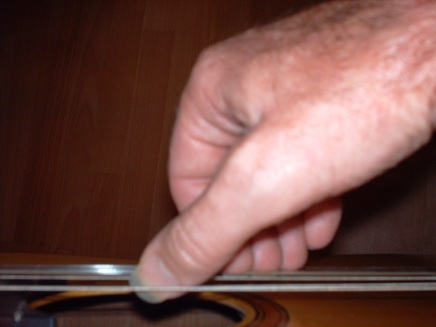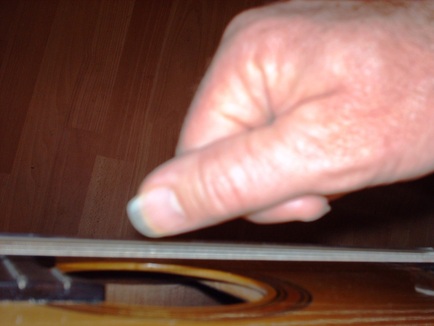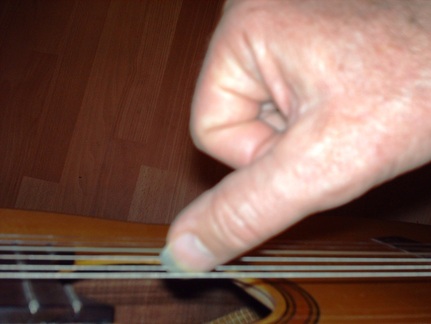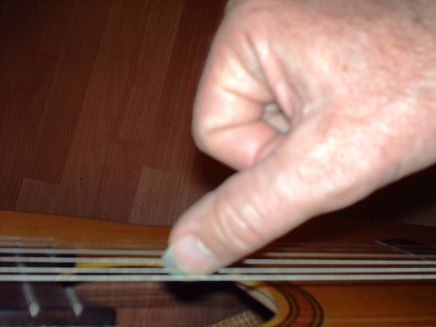Block Chords
When it comes to the right hand, there are three methods of playing chords: Strumming, Arpeggiation, and Block Chords. Block Chords are played by the individual right hand fingers (including "p") playing four strings simultaneously. In most cases, "i", "m", and "a" play the 3rd, 2nd, and 1st strings respectively while "p" plays the root of the chord (the note for which the chord is named). This is sometimes known as a full plant because the fingers and thumb plant themselves on the strings before playing them.
It is important to note that this is the only occasion when "p" and the right hand fingers touch the strings simultaneously. When playing Block Chords, both "p" and the right hand fingers play Free Strokes at the same time while the hand itself remains still.
Right Hand before playing a Block Chord:
It is important to note that this is the only occasion when "p" and the right hand fingers touch the strings simultaneously. When playing Block Chords, both "p" and the right hand fingers play Free Strokes at the same time while the hand itself remains still.
Right Hand before playing a Block Chord:
Right Hand after playing a Block Chord:
It is also possible to separate these two movements so that the bass note precedes the rest of the chord. To do
this, begin with "p" on the bass string and "i", "m", and "a" in the hand, as if they have already played. Your hand should look like this:
this, begin with "p" on the bass string and "i", "m", and "a" in the hand, as if they have already played. Your hand should look like this:
Now, simultaneously play "p" and return the fingers to their respective strings.
Now your hand should look like this:
Now your hand should look like this:
Next, simultaneously play the fingers while returning "p" to the bass string. As a result of these actions, your
hand should now be in the same position as it was when you began:
hand should now be in the same position as it was when you began:
Note that each time you move, there are two movements occurring simultaneously. In the first movement, "p" is playing while "i", "m", and "a" are returning to their strings and in the second movement "i", "m", and "a" are playing while "p" is returning to its string.
After mastering this lesson a natural progression would be to study the Introduction To Arpeggios
Copyright © 2011 by Thomas Coffey All Rights Reserved Internaitonal Copyright Secured




